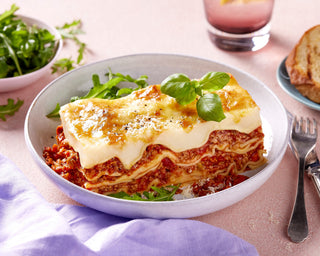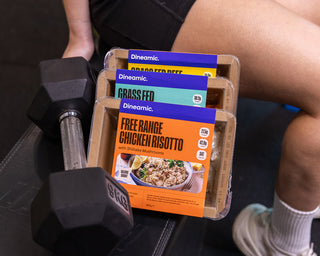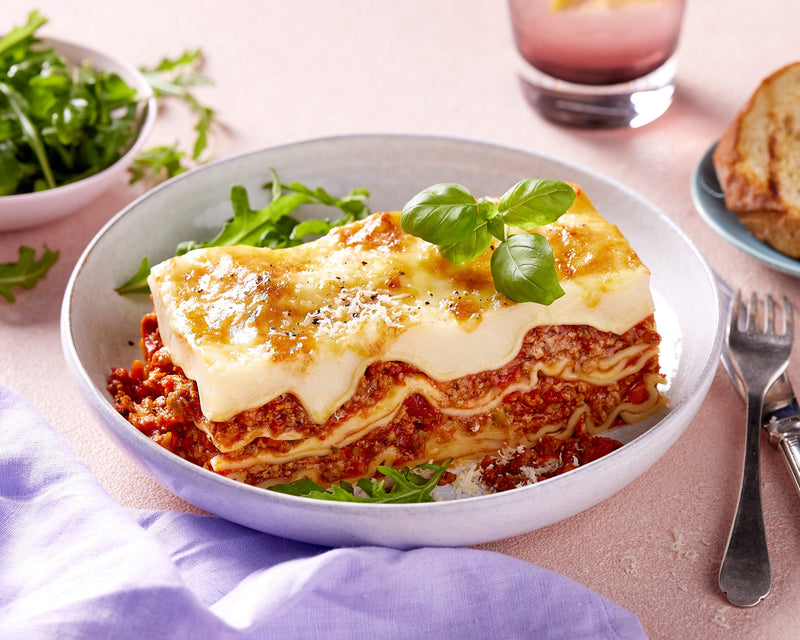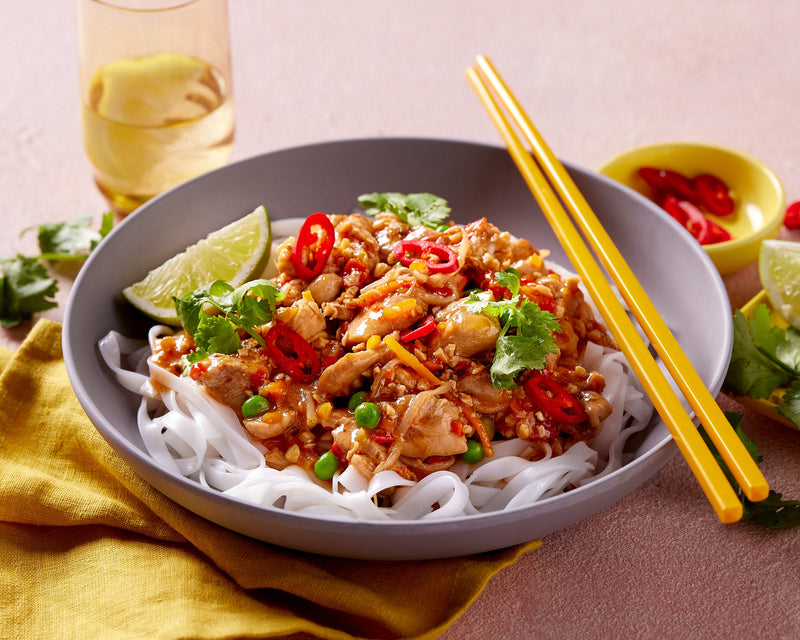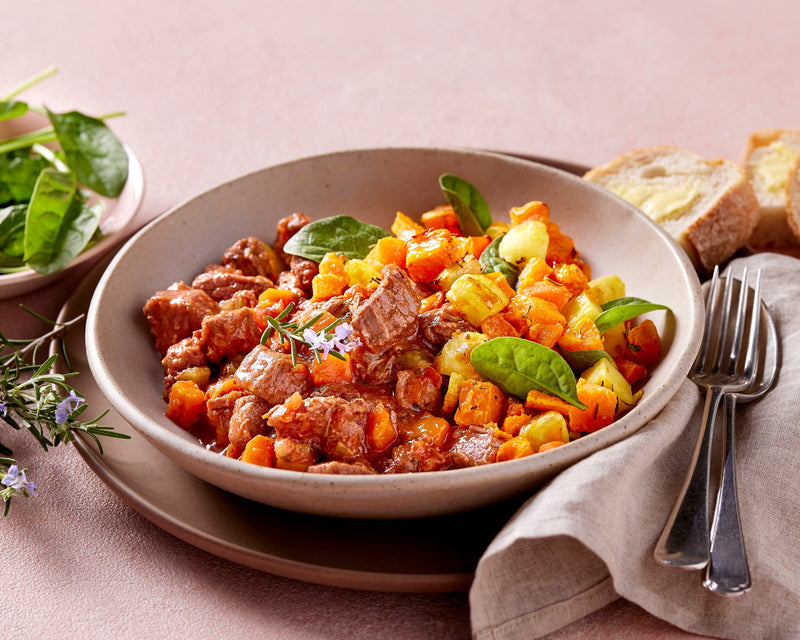Introducing our NEW Halopack eco packaging
We’ve been working for over a year now to be part of the solution to bring down the amount of plastic Aussies use and make it easier (and kinda fun) to recycle. So, we slipped into something more sustainable for our Dineamic tray meals.

Why the switch?
Right now, Aussies use 130kg of plastic per person, per year, and recycle only 12% of that.
We’re all aware of the detrimental effect single-use plastic has on our environment. We’ve heard the shocking statistics and seen the photos and videos of our marine and wildlife affected by waste and our waterways contaminated with debris. It’s made us more conscious about our decisions that involve plastic. Plastic bags are banned in all but one state, we’re respectfully sipping our cocktails with no straws and using re-useable cups.
Doing business in a way that’s better for the planet is something our team lives and breathes, and from close connection with you, our customers, we know it’s something you care deeply about, too.
It’s our aim to provide nutritious meals that make Australians healthier, and doing it in a way that helps every person or place along the way - by choosing locally sourced food, cooking to order to minimise waste, operating out of a 100% carbon neutral kitchen and now switching to Halopack eco packaging that will cut at least twenty tonnes of plastic a year.
We’re so proud of the steps we’re collectively taking to make our planet better.
What makes Halopack eco packaging better for you and the planet?
- 100% sustainable cardboard (made up from recycled and FSC certified board)
- Free from additives like PE coating and adhesives
- Low carbon footprint
- Uses minimal resources to produce its lightweight packaging
- Save over twenty tonnes of plastic a year
- Uses 92% less plastic compared to our previous plastic tray
We hope you’ll enjoy your Dineamic meal with pride knowing it’s better for you by being packed full of nutrition and freshness, and now even better for the planet.
FAQ'S
Can I freeze the meals for the same duration?
Yes, if you would like to make your meals last longer, we recommend freezing them when you receive them to lock in peak freshness. We also recommend reheating from frozen, not letting the meal defrost. Because the freezing rate varies from freezer to freezer and the date the meal is placed in the freezer can vary, we’re not able to advise on a definitive shelf life date, but as a general rule you are likely to get up to three months from a fresh meal that has been frozen.
Do the meals retain the same shelf life in the eco packaging?
Yes, the freshness of the meals is not altered by our new eco packaging. You will have up to 7 days to consume your meals from the date you receive them.
Is the eco packaging microwaveable?
Yes, the new eco packaging is safe to microwave, just follow the directions on the pack.
How do I dispose of the new eco packaging?
After you’ve eaten your nutritious Dineamic meal, simply tear the film, separating it from the cardboard. The cardboard can be placed in the recycling bin, and the film can be placed in soft plastics (if accessible) or waste.
What material is it made out of?
The new tray is made out of 70% recycled cardboard and 30% FSC (Forest Stewardship Council) cardboard, making it 100% sustainable.
Where is the packaging sourced?
We worked with Halopack in Europe to bring this new technology to our customers in Australia.
Why did you change the packaging?
It’s our aim to provide healthy, nutritious and fresh meals to Australians in a way that helps every person or place along the way - we choose locally sourced produce, cooking to order to minimise waste and operating out of a 100% carbon neutral kitchen. Changing the packaging to be eco-friendly by using Halopack, is another step towards this aim, and one that will save over two tonnes of plastic a year.
REFERENCES: https://journals.plos.org/plosone/article/file?type=printable&id=10.1371/journal.pone.0080466


